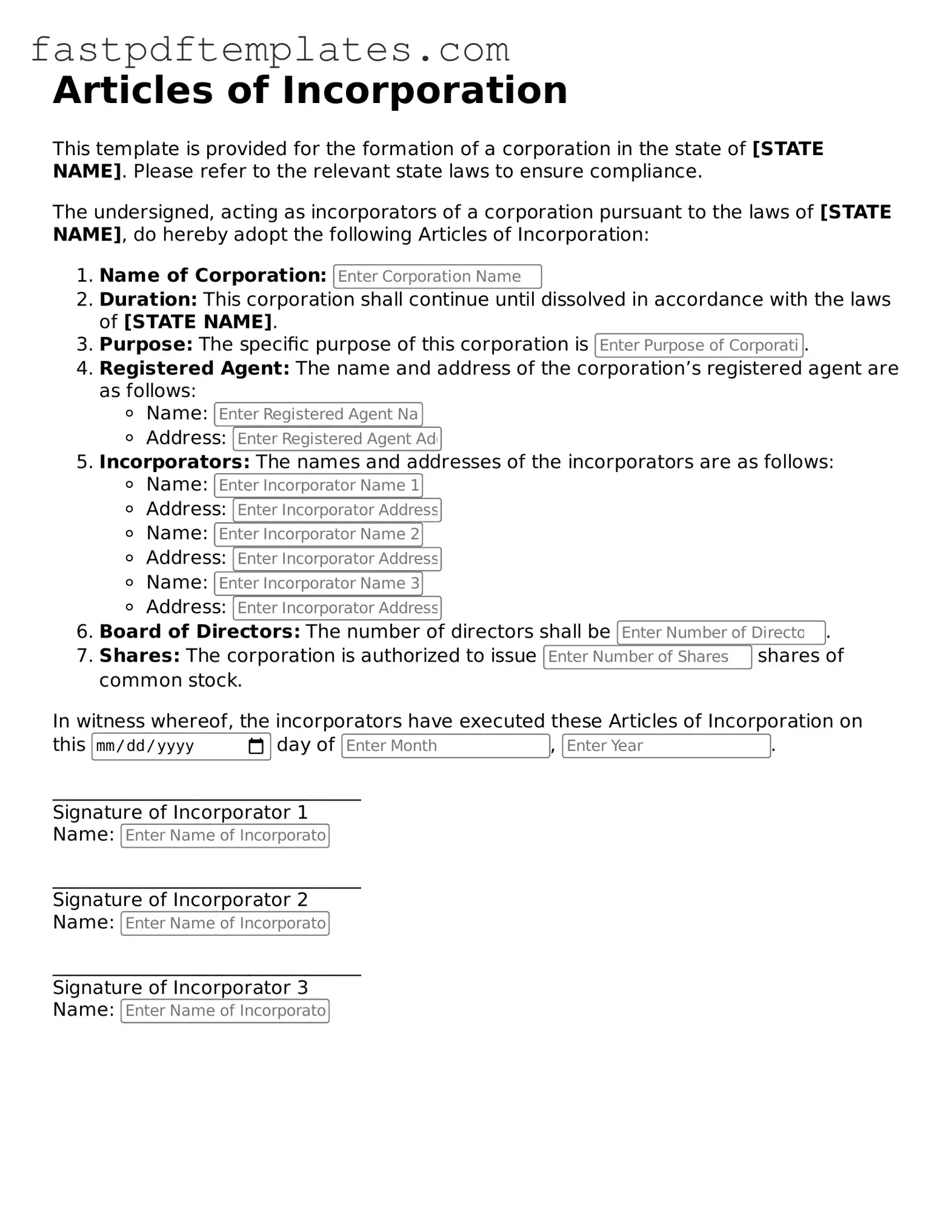The Articles of Incorporation is similar to a business license. A business license grants permission to operate a business within a specific jurisdiction. Both documents serve as foundational elements for establishing a business. While the Articles of Incorporation create a legal entity, a business license ensures compliance with local regulations. Obtaining both is essential for lawful operation and protection against legal penalties.
Another comparable document is the Operating Agreement. This document is crucial for limited liability companies (LLCs). It outlines the management structure and operational procedures. Like the Articles of Incorporation, it defines the relationship between members and the business. Both documents help in clarifying roles and responsibilities, ensuring smoother operations and reducing potential disputes.
The Bylaws of a corporation share similarities with the Articles of Incorporation. Bylaws govern the internal management of the corporation. They detail procedures for meetings, voting, and the appointment of officers. While the Articles of Incorporation establish the corporation's existence, Bylaws provide the framework for its governance. Both are essential for maintaining order and clarity within the organization.
A Certificate of Formation is another document that resembles the Articles of Incorporation. This document is often required to officially register a business entity with the state. It includes basic information about the business, similar to what is found in the Articles of Incorporation. Both documents are necessary for legal recognition and provide a means to identify the entity within the state’s records.
The Partnership Agreement is akin to the Articles of Incorporation, especially for partnerships. It outlines the terms of the partnership, including profit sharing and responsibilities. While the Articles of Incorporation focus on corporations, the Partnership Agreement serves a similar purpose for partnerships. Both documents define the structure and operational guidelines of the business entity.
The Statement of Information is another document that parallels the Articles of Incorporation. Required in some states, it provides updated information about a corporation's address, officers, and agents. Similar to the Articles of Incorporation, this document ensures transparency and keeps the state informed about the business's current status. Both are vital for maintaining good standing with state authorities.
The Shareholder Agreement is similar to the Articles of Incorporation in that it governs the relationship between shareholders. This document outlines rights, obligations, and procedures for buying or selling shares. While the Articles of Incorporation establish the corporation, the Shareholder Agreement provides a framework for shareholder interactions. Both documents are essential for protecting the interests of the business and its owners.
The Certificate of Good Standing is another document that relates closely to the Articles of Incorporation. This certificate verifies that a corporation is legally registered and compliant with state regulations. It serves as proof that the Articles of Incorporation were filed and that the business is in good standing. Both documents are crucial for establishing legitimacy and trust with clients, partners, and financial institutions.
Lastly, the Annual Report bears resemblance to the Articles of Incorporation. This report provides an overview of a corporation's financial performance and operational status. It is often required to keep the corporation in good standing with the state. While the Articles of Incorporation establish the business, the Annual Report ensures ongoing compliance and transparency. Both documents contribute to the overall governance and accountability of the corporation.
